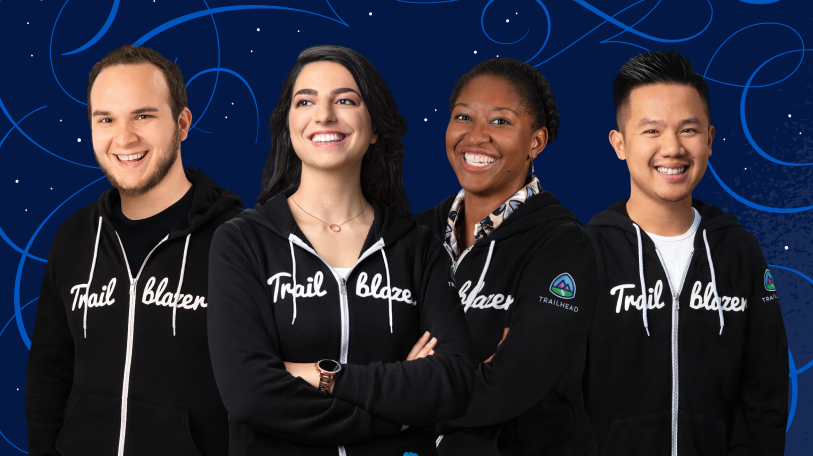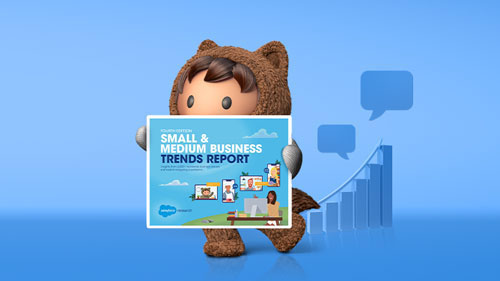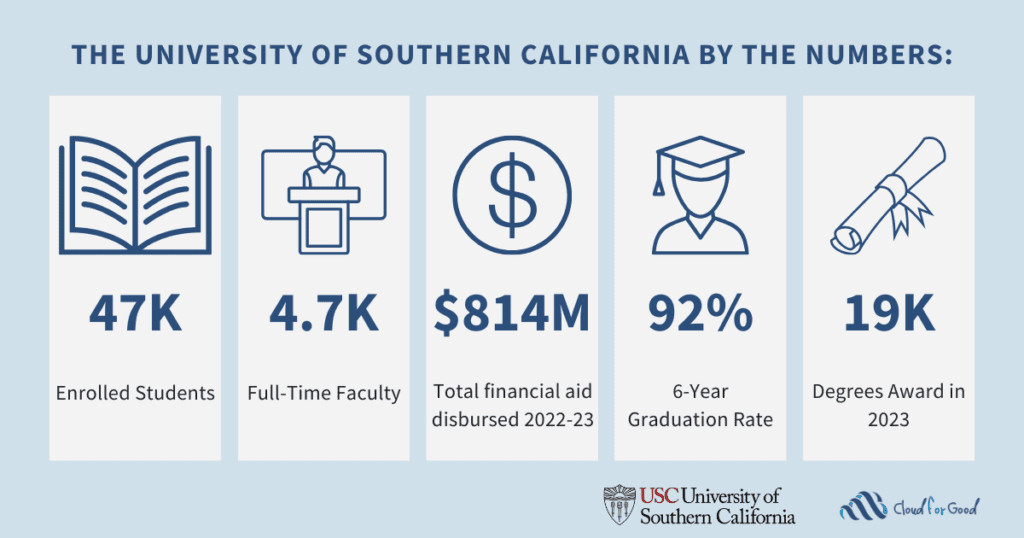Imagine connecting with a room full of eager clients and partners from the comfort of your own office, all without the hassle of a physical venue. That’s the power of webinars, and they’re revolutionizing how small and medium-sized businesses (SMB) engage with their audiences and build brand authority.
Webinars offer SMBs a cost-effective way to reach a global audience. To make your webinar a success, it’s important to create an experience that resonates with your audience and leaves them wanting more, not just presenting information.
Learn how to host a webinar that captivates your audience, builds brand awareness, and connects you with your community. Let’s dig in.
What we’ll cover:
- What is a webinar and why do small businesses need them?
- What to do before the webinar
- Promote your webinar
- During the webinar
- Post-webinar activities
- Host your webinar with confidence
What is a webinar and why do small businesses need them?
A webinar is an online seminar or presentation that allows you to connect with your audience remotely. It’s a blend of “web” and “seminar,” making it a virtual event where you can share knowledge, showcase products, or simply engage with your audience in real-time. It’s like a live video conference where you can educate, interact, and build relationships with your viewers.
For small businesses, webinars offer benefits that can help them grow and thrive in today’s competitive market. In fact, 43% of marketers use webinars to understand their audience.
Webinars are a cost-effective way to reach your audience, saving on venue and travel costs. They help build strong business relationships by showcasing your expertise, nurture leads that are more likely to convert, and offer a direct way to boost sales by demonstrating products and addressing concerns.
Start with SMB Basics
What to do before the webinar
To host a successful webinar, prioritize choosing a topic that balances your expertise in sharing valuable advice, offering a service, or highlighting product features. So, how do you pick a topic that will leave them wanting more and strike a balance? Here’s how:
Identify your target audience
Before selecting the topic right away, know who your audience is. What are their interests, needs, and pain points that can help you create relatable content that resonates with them?
To know your audience, look at your existing customer base or followers. What are their common interests or challenges? Then ask them directly through social media, newsletters, or surveys what they want to learn more about. Stay on top of industry trends to create content that truly resonates with them.
Speak to your expertise
Once you know your audience, it’s time to pick a topic that will engage them. Your entrepreneurial spirit can shine here by highlighting your expertise or why you started your brand.
You can look for a common problem your audience faces and offer solutions. This could be a tutorial, a case study, or expert advice that people need. This could be related to new technologies, industry changes, or seasonal themes. Then, incorporate elements that encourage audience participation, such as Q&A sessions, polls, or live demos.
Include insightful industry trends
Stay on top of what’s trending in your industry to pick topics that are relevant. This can be informative for your audience. You can look for these topics by following leading blogs and news sites in your industry to see what topics are being covered. Tools like Google Trends social media platforms like X (formerly Twitter) or LinkedIn can help you to get an idea of what’s currently popular. Attending other webinars or conferences can give you ideas for topics that are currently resonating with audiences.
What trends drive sales productivity today?
Get the State of Sales Report to discover AI and productivity insights from thousands of sales professionals.



Map out your webinar’s agenda
After figuring out the topic, you need to map out your webinar’s journey by setting up your objectives. You need to know where you’re going and how you’ll get there. Without that, you might end up with a well-attended webinar that doesn’t drive any real results for your business.
A well-structured agenda helps keep your webinar on track and tells your audience what to expect. Here’s how to create one:
- Start with welcoming attendees and a brief introduction to set the tone.
- Always have some slides talking about the problem you’re trying to solve.
- Break down your main content into manageable chunks. Use clear headings and allocate specific times for each section.
- Always leave time for a Q&A session to address questions they might have.
- Summarize key points and provide clear next steps.
Set clear content goals
Set specific, measurable, achievable, relevant, and time-bound (SMART) content goals that you’ll be presenting in your webinar. Decide how you want your audience to see you or remember you or what action you want them to take. If your goal is to generate leads, create content that will encourage your audience to sign-up, download, or follow-up.
If you’re launching a new product or service, create content to drive sales or demos. For brand visibility, go for social media content.
Align webinar and business goals
Are you trying to expand into a new market, launch a new product, or increase customer engagement? Now, match those webinar goals that contribute to achieving that business strategy.
For example, if your business goal is to increase sales by 20% this quarter, your webinar could focus on promoting a key product or service. Use past webinar data or industry benchmarks to inform your objectives. If you know that webinars typically generate a certain number of leads, adjust your goals accordingly.
Just get started.
No matter where you are on your journey as a small business owner, you can get started with Starter Suite — the all-in-one AI CRM your SMB needs.

Select the right webinar platform
You need the perfect venue for your perfect event, right? Then why not do the same for your digital event? Your platform needs to be easy to use, offer the right features, and fit your budget.
You can get overwhelmed with so many options available now, but focus on the features you want and will handle your capacity of seats. Choose a platform that is easy to navigate for you and your attendees with interactive features like live chat, polls, and Q&A sessions. It should also offer analytics and reporting features to track performance. Bonus points if it can be integrated with your customer relationship management (CRM) or marketing automation tools.
Here are some of the most popular webinar platforms:
- ON24: ON24 can be great if you continuously engage your audience with hyperpersonalized, AI-powered experiences to deliver connected insights.
- Zoom: Known for its simplicity and reliability, Zoom is perfect for you as a straightforward solution with global reach.
- GoToWebinar: GoToWebinar has a customer-friendly interface and is ideal for small teams and large organizations. It provides tools for engaging experiences and actionable data.
- Webex: Webex can be a reliable choice for large enterprises, with a wide range of features and scalability.
- Demio: Demio focuses on creating engaging experiences with data-driven insights, making it ideal for marketers and sales teams.
- Livestorm: Livestorm offers a browser-based approach, eliminating the need for downloads, and is easy to use.
Managing your webinars and all the information they hold can be a tedious task. Salesforce for small business can help you manage your webinar leads and customer interactions. It can track attendee engagement, follow up with leads, and integrate your webinar data with your overall marketing strategy.
What can your small business do with marketing automation on
Salesforce CRM?



Prepare your content
Preparing engaging content is key to keeping your audience interested. You can create slides, write scripts, provide handouts, add videos, and so much more. Keep in mind a few points, like:
- For slides, avoid cluttering and too much text. Keep them simple by using visuals and clear headings, and prepare speaker notes to ensure a smooth delivery.
- For scripts, write naturally and incorporate stories wherever possible. Improvise as per your audience feedback.
- For resources, offer additional resources like ebooks, whitepapers, or checklists that complement your webinar content. And make sure your call-to-action (CTAs) are clear.
Schedule your webinar
Planning a webinar includes lots of details to consider, but with a clear plan, you can make sure that everything runs smoothly. When deciding on a date and time for your webinar, here are some things you should consider:
- Avoid scheduling your webinar during peak hours when your audience might be busy.
- Accommodate different time zones for a global webinar.
- Test different times with smaller groups to see which one yields the best attendance and engagement.
Technical setup
You need to be sure everything is perfect and running so that it won’t hinder the real webinar. Start by testing your internet connection, audio/video, and devices. Here are a few basic things you should check before going live:
- Internet speed test: Do a quick internet speed test to make sure your connection is strong and fast enough for HD video — aim for at least 10 Mbps upload and download speed. Use a wired Ethernet connection instead of Wi-Fi to make things more reliable.
- Webcam check: Check the webcam to see that the video is clear, well-lit, and that you’re positioned at eye level.
- Audio testing: Test your microphone. The audio should be crystal clear without any distracting background noise. Use an external microphone for the best sound and noise-canceling software.
Test the platform
After that, get to know what’s inside the webinar hosting platform before the big day. Explore a few things like:
- Explore interface: Explore the interface so you know where everything is.
- Try interactive tools: Try cool interactive tools like polls, Q&A, and chat. You don’t want any surprises during the live event.
- Practice screen sharing: Practice sharing your screen a few times. This way, you’ll be able to switch between your presentation and other stuff smoothly.
Rehearse it
Conduct a dry run at the end of the creating slides and technical checks like a rehearsal. You’ll be able to identify and fix any potential issues before your live webinar. Invite test participants to help you understand the participant settings, run through your presentation to check timing and flow. Then, test all features like audio and interactive tools, and address any technical hiccups with the help of your tech team.
Join millions in the growing Salesforce ecosystem
Trailblazers are free to reinvent themselves, free to dream bigger.

Promote your webinar
Market your webinar by telling your audience it’s happening, why they should attend, and how to RSVP. Here are a few ways to market your webinar:
Craft a compelling invitation email
Email marketing is a powerful tool for promoting your webinar, especially if you’ve been growing subscriber emails. And it’s time to send your friends, support system and all your subscribers a personal invitation.
Tailor your emails to specific segments of your audience based on their interests or past interactions with your content. Use attention-grabbing subject lines and highlight the value your webinar offers. Also include visuals like images or videos to make them more appealing. Check your CTA is prominent and easy to click.
Share on social media
Social media can help you create buzz around your webinar. There are many ways to do it. For example, you can share short, engaging teaser videos on Instagram or LinkedIn that give a sneak peek into your upcoming content. And, you can create interactive content such as polls, quizzes, or Q&A sessions to encourage your audience to share your content.
Paid advertising on platforms like LinkedIn, Facebook, or X can be leveraged to reach specific demographics and interests. Finally, utilizing relevant hashtags and tagging influencers or partners in posts can further expand your reach.
PRO TIP: Use artificial intelligence (AI) to create content using prompts. You can use simple text prompts to generate the content you want in a much faster way. Prompt example, “craft an Instagram caption with hashtags to promote webinar on how to increase productivity.”
Collaborate with influencers
Teaming up with influencers and partners in your industry can really boost your webinar’s reach and make it seem more credible. You could ask like-minded influencers to give you a shout-out to their followers. Or team up with another business and cross-promote each other’s posts – maybe you share their social media posts, and they feature you in their newsletter. Win, win.
Last but not the least, you can offer exclusive gated content or special insights to influencers and partners to get them to spread the word about your webinar.
During the webinar
During the webinar you need to be ready for planned and some not-so-planned things. Set the tone, follow the rhythm, and adapt to any unexpected notes. Start by welcoming the audience, then follow your agenda, and keep the energy high, while keeping an eye on any potential technical issues.
Set the tone
Remember what you decided while creating the agenda. Kick off with a warm welcome, introduce yourself and the topic, and outline what attendees can expect. Encourage participation by asking questions via chat or setting aside time for a Q&A session at the end.
Be flexible with your agenda
Your agenda is a guideline for the webinar. With organic conversations, it can get sidetracked, but that’s part of the webinar charm. Stick to your agenda, but without being rigid. You can use your agenda to cover key points and use visual cues like slides or a timer to help you stay on track and transition smoothly between topics. And spend more time on topics that engage attendees deeply.
Engage your audience
Engaging your audience is important to make them feel included and entertained. You can make your event forgetful by keeping it boring and technical. Or you can add some excitement with interactive elements, making your audience participate and feel happy to attend your webinar.
Encourage attendees to share their thoughts or experiences related to the topic. You can ask questions like, “Have you ever faced this challenge?” or “How do you currently handle this situation?” Ask them to share their stories or tips to add diverse perspectives to the discussion.
Use interactive elements
Turn a passive webinar into an engaging experience with interactive elements. Use polls to gather feedback or opinions from your audience. Dedicate time for a live Q&A session. Make them feel heard and valued. Turn on live chat for attendees to interact with each other or ask questions in real-time. More useful for larger webinars where not everyone can speak up during a Q&A.
Provide value
Offer practical tips or strategies that attendees can apply immediately. This could be a checklist, a template, or a step-by-step guide. Use relatable real-life examples or case studies to illustrate your points. You can also provide exclusive resources like ebooks, or software trials that attendees can access after the webinar.
Kickstart your SMB with Starter Suite
Get started with CRM and see results from day one with Starter Suite — the all-in-one suite with the marketing, sales, service, and commerce tools you need to succeed.

Handle any technical issues promptly
Technical issues can happen. What you can control is your reaction to them. They can hinder your process, but you need to be ready and handle them promptly. Just stay calm and inform them via chat or email, reassure them everything will be resolved. If nothing happens, have a backup plan or slide in place, like going to questions from the audience.
Post-webinar outreach
Woohoo! It’s all over. Wait – is it? After your webinar’s all done, you might feel like it’s completed, and you can check it off your list. But the real work starts now. Post-webinar outreach increase the impact of your event and build lasting relationships with your audience. All of your webinar attendees are now leads, and should be in your customer relationship management system (CRM)
And now the fun part. Managing these leads and making the most out of your webinar, Here’s how to make it possible:
Acknowledge and thank attendees
A little care and appreciation goes a long way. Acknowledge and thank your attendees for their time and interest after the webinar via email or message. Include a link to the webinar recording, any exclusive offer or discount, and any additional resources (like an ebook or new feature) you promised during the event. And ask them to share their feedback.
Analyze webinar performance
Analyze your webinar’s performance to see what worked well and what didn’t. Look at metrics like attendance rates, engagement levels (like poll participation), and feedback forms. Feedback forms will help you get perspective from attendees, what they liked, what they disliked, and what they’d like to see in future webinars. You can then use that to refine your content and promotional strategies for future webinars.
Follow-up, follow-up, follow-up
Follow up with your attendees (which are leads now) because they’re prime to be future customers. Create email campaigns that provide additional value to attendees. It can be more resources, tips, or insights, or takeaways from the webinar.
And, personalize it all. Use your feedback data to address attendees by name and reference their specific interests or challenges. Implement business growth strategies to convert leads into customers by offering demos, trials, or consultations based on their interests.
Check out more webinars for your growing business
Watch webinars that’ll give you more know-how, more business knowledge, and more skills to help your SMB grow.



(Back to top.)
Host your webinar with confidence
Hosting a webinar is an experience and a learning journey for you as well as for your audience. You learn how to host a webinar, build a brand reputation, and eventually convert your leads. Your audience leaves with knowledge. And it only gets better when you store all the information and data in one place.
Salesforce is an all-in-one CRM that brings your sales, marketing, service, commerce, and productivity tools together and can help you on your webinar journey
Start your journey with a free trial of Starter today. Looking for more customization? Explore Pro Suite.
AI supported the writers and editors who created this article.







